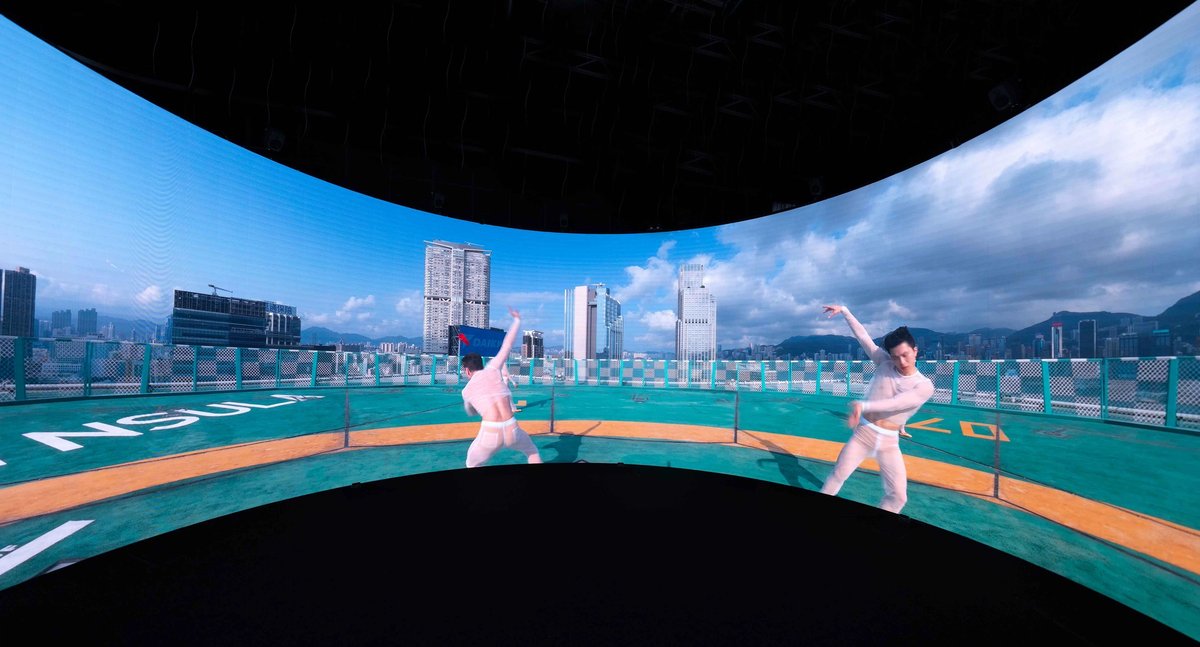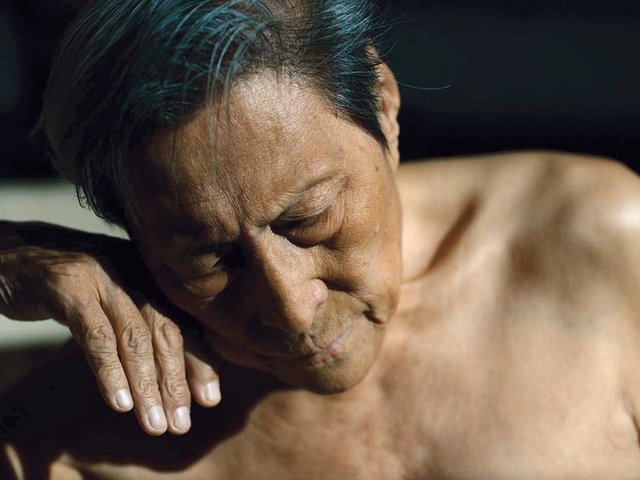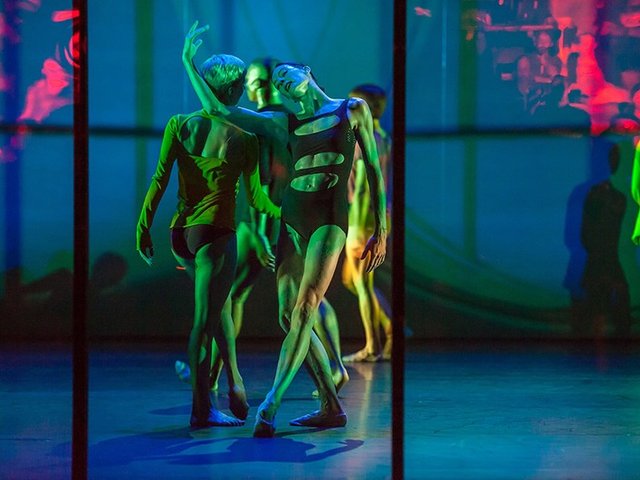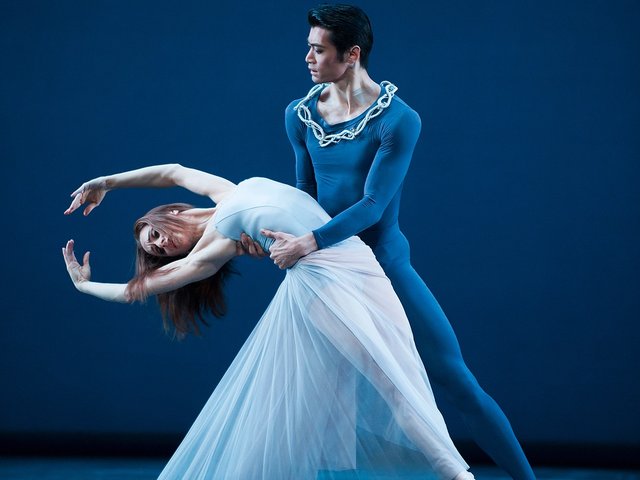At the core of this year’s Biennale Danza in Venice (17 July-2 August) was a work deeply concerned with choreographed movement yet also at the vanguard of digital art installation. On the Other Earth is a collaboration between the choreographer Wayne McGregor (the Biennale’s artistic director), the artist Jeffrey Shaw and the digital museologist Sarah Kenderdine, among others.
It comprises a panoramic, 360-degree “nVis” environment, featuring a huge 12k LED, 26-million-pixel screen, on which dancers from McGregor’s own company and the Hong Kong Ballet perform. They are thrust into the space of the viewer, bringing dance closer perhaps than ever before to its audience.
The installation’s cross-disciplinary appeal is indicated by its forthcoming itinerary: it will appear again in Venice at the film festival (27 August-6 September) before its showing in Stone’s Nest in London, as an off-site element of McGregor’s major exhibition at Somerset House, Infinite Bodies (30 October-22 February 2026). In 2026, it will travel to the Tai Kwun Centre for Heritage and Arts in Hong Kong—Shaw and Kenderdine’s experiments have previously been conducted at the city’s Baptist University.
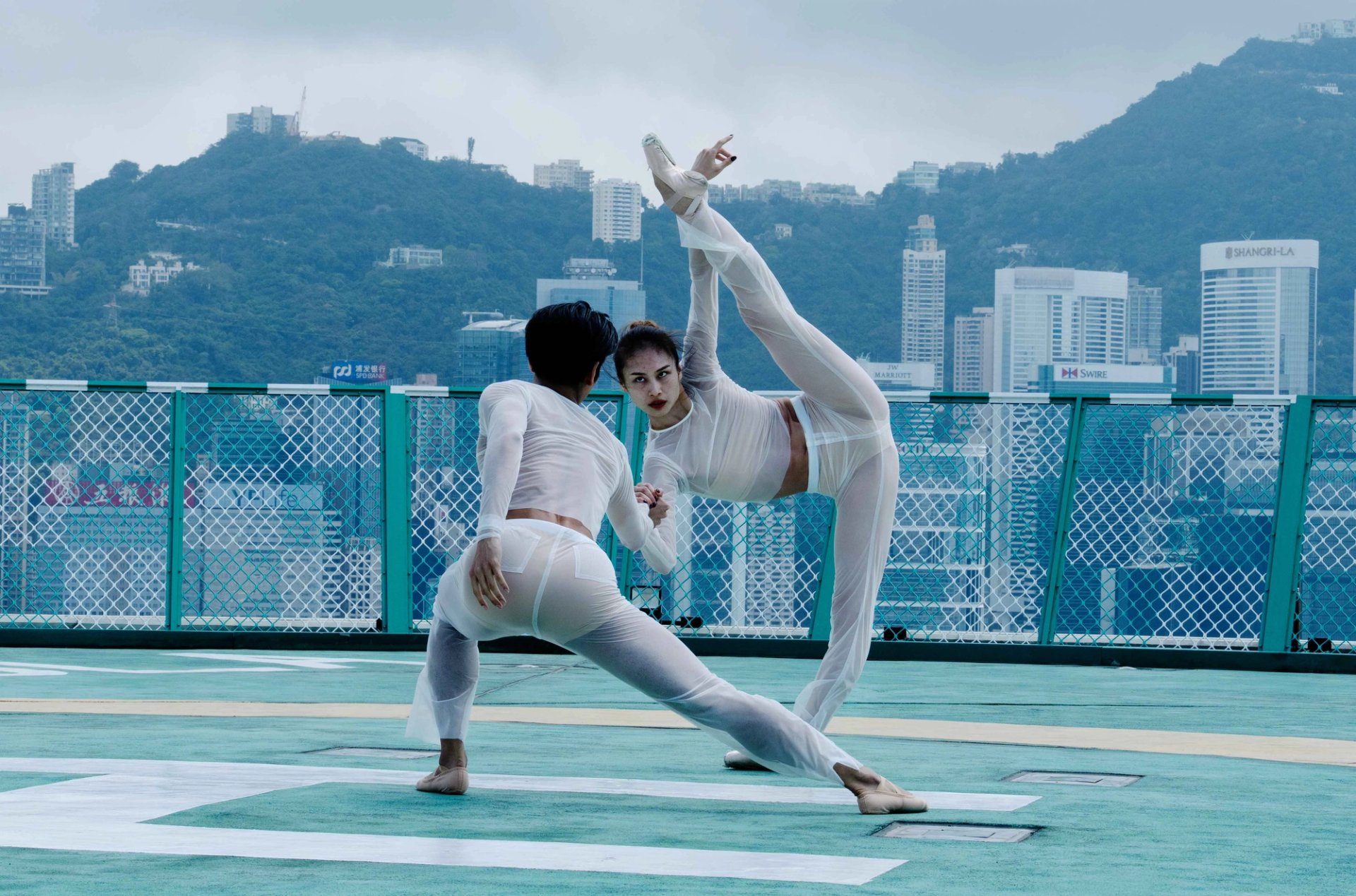
The performance features movements that took place on the helipad of the Peninsula hotel in Hong Kong
Photo: Ravi Deepres
McGregor, who has been director of the (actually annual, rather than biennial) Venice event since 2021, says its theme, Myth Makers, emerged partly from his observations that choreographers were “particularly interested in recreating ancient myths for modern times, through their own lens”. He notes that they—like many of their peers more embedded in the visual arts—are also exploring “speculative futures, thinking about potential future myths” by “using or dialoguing with new technology or conversations around AI”.
His own contribution is part of “a lifelong inquiry”, he says, into: “How is it that you can create a digital presence for the body, which in some ways is equivalent to a live presence?” That “in itself is quite a mythical adventure,” he adds. “It's quite an odyssey.”
In this, he firmly situates himself within the art historical tradition of attempting to capture bodies in flux or transformation—and he has characteristically epic ambitions for it. “On the Other Earth was an attempt to make something with technology which hopefully in the future might be a mythical moment, a moment where perhaps there was a sea change in the way in which one thought about digital presence.”
McGregor describes the piece as being formed from the same “conceptual DNA” as Deepstaria, his dance work first performed by Montpellier Danse in 2024. It explored the human body in relation to the void—from the lightless depths of the sea (Deepstaria is a kind of jellyfish) to infinite space and the fathomless intangible expanses of AI and technology.
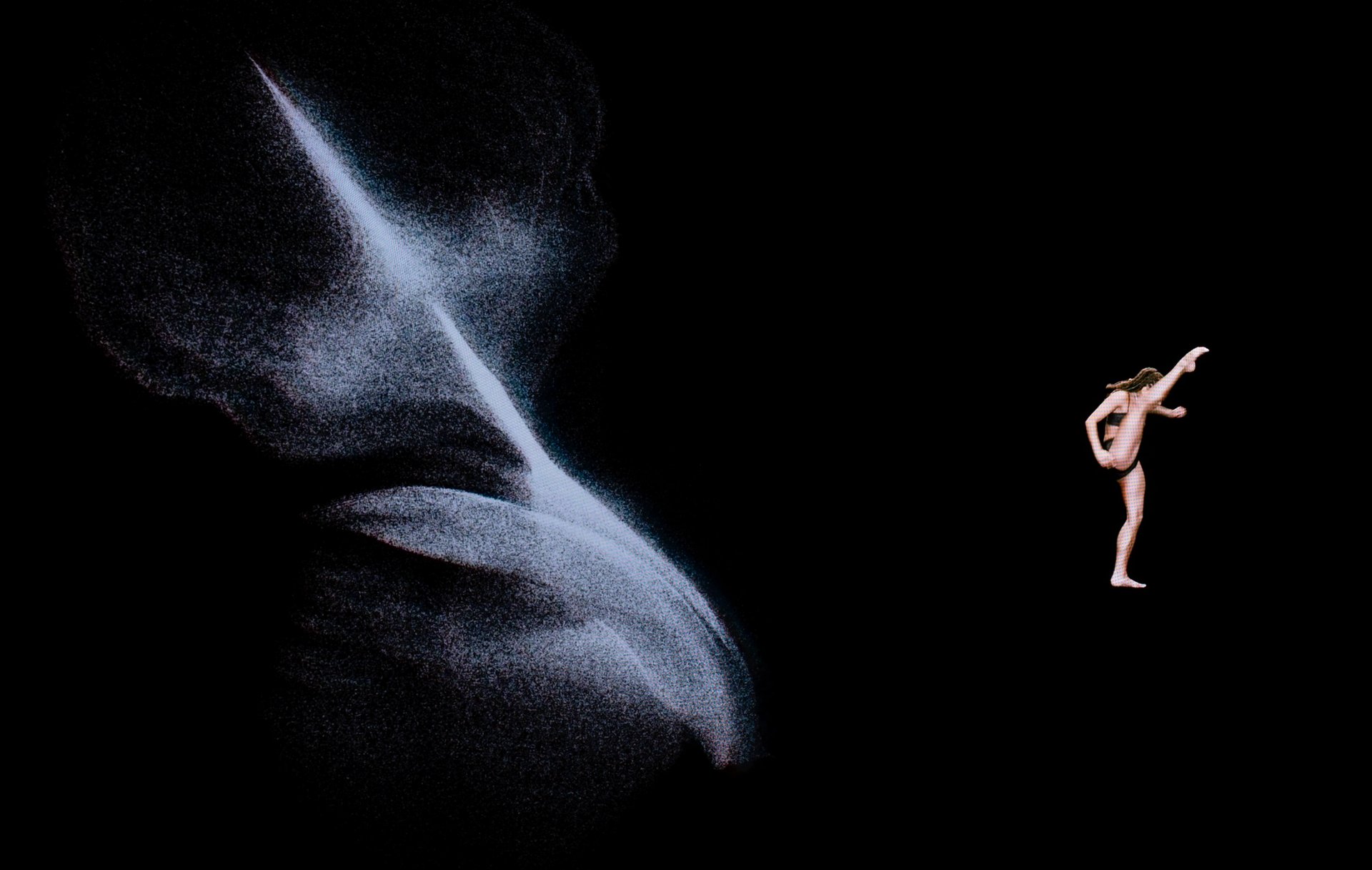
On the Other Earth reflects McGregor’s continued interest in the notion of the void
Photo: Ravi Deepres
“One of my aspirations for Deepstaria from the beginning was to have a really phenomenal digital twin of the work,” he says. “Something that was equivalent but different, something that could take you on a completely different adventure, but that in some way would exorcise some of the qualitative aspects of the work—the phenomena that you see live on stage; that you could see both of them in partnership.”
But he could not find a platform, “a way of delivering the conceptual DNA, that was exciting enough to be able to show it together… I didn't want to show something that couldn't stand up to the live dance experience.”
Enter Shaw and Kenderdine. Shaw has a long visual arts pedigree: among much else, he was part of the Artist Placement Group, the radical community programme founded by the artists Barbara Steveni and John Latham in 1966, and became the founding director of the ZKM Institute for Visual Media in Karlsruhe, Germany, in 1991.
Kenderdine, meanwhile, is a pioneer of interactive and immersive experiences for museums, libraries and archives, and the founder of the Laboratory for Experimental Museology at EPFL (École Polytechnique Fédérale de Lausanne) in Switzerland.
Within Shaw and Kenderdine’s nVis “post-cinematic” screen environment, McGregor—working with the artists Ravi Deepres and Theresa Baumgartner on cinematic design and 3D 360 animation, and the sound artists Nicolas Becker and LEXX (known as Invisible Mountain)—has amplified and enhanced his choreography, which he has “always thought of as an interrelation of body, time and space”.
Sequences relating to the original Deepstaria choreography are allied to entirely new movements that took place on the helipad of the Peninsula hotel in Hong Kong, performed by the Hong Kong Ballet and Company Wayne McGregor. These are interspersed with digital animations that depict atomised “sculptures” of dancers and amorphous forms drifting through the immersive environment. They evoke both deep space and the deep ocean.
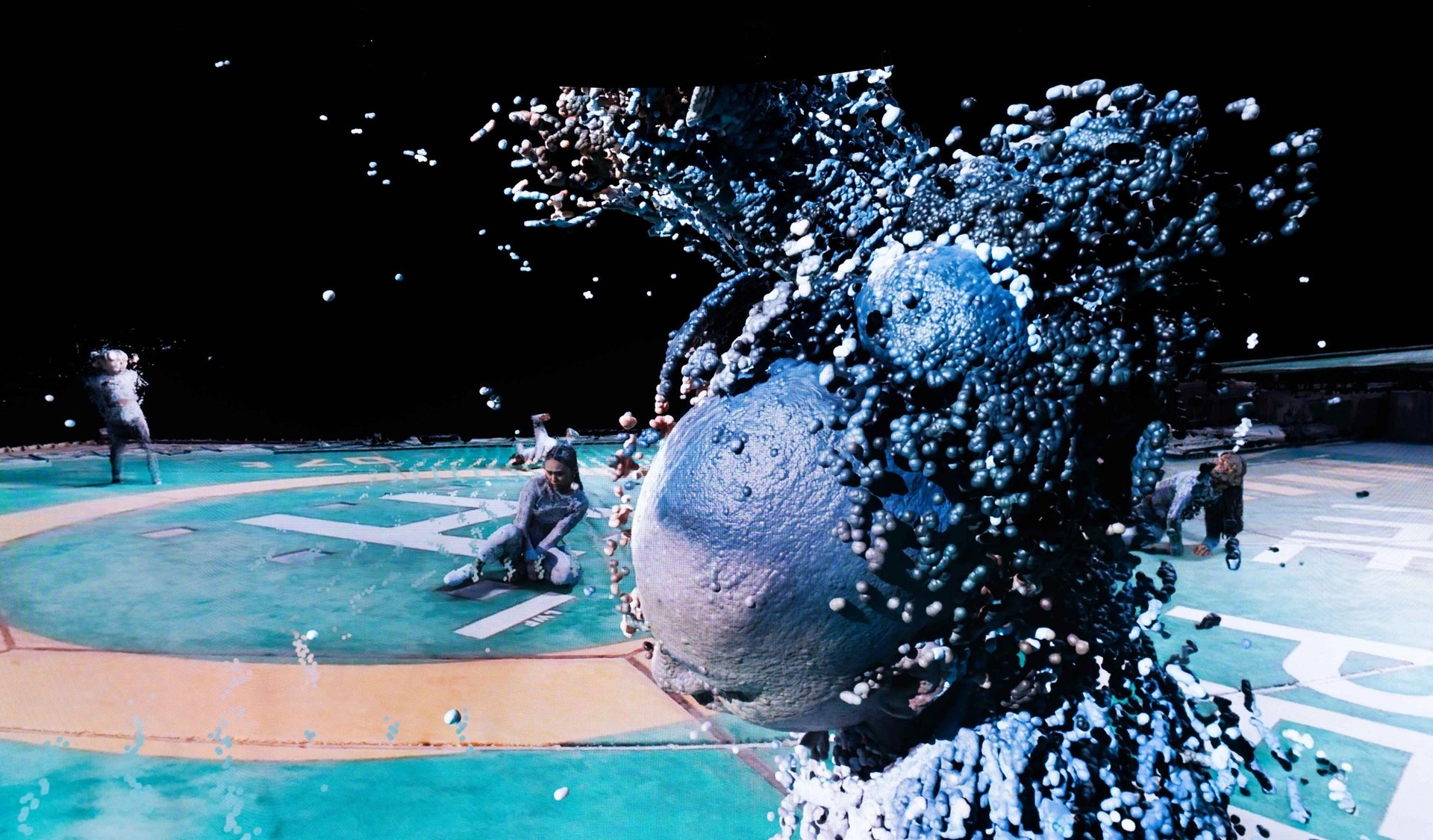
The work features atomised “sculptures”
Photo: Ravi Deepres and Luke Unsworth
McGregor admits that experiments earlier in his career “subsumed the physicality or subdued the choreography [within his work], partly because that was the state of the technology”. But after three decades of exploring this interface, he felt able to “restrict and reduce what we do” in order to emphasise a core purpose: “felt experience”, as he puts it. “One of beautiful things about On the Other Earth is that you are so close to a dancer that you see expression in a way that you don't normally, far away.” One also sees muscle movement, like stretched hamstrings, with extraordinary fidelity. “Even with me being close in the studio, I'm never that close… You see the toes and how they grip on the floor.”
Yet the effect of the work is as much emotional as physical, running counter to a common—to this writer, inexplicable—criticism that the technical and physical virtuosity in McGregor’s choreography renders it coldly unemotional. The spectacular impact of the 3D experience is as much on the level of feeling as technological appreciation. “A lot of people who've seen this [have] seen the expressions of the dancers’ face—the way in which it really does feel that dance comes from the inside of them out,” he says. “You see the physical work but you see the expressive work and for me that's really beautiful.” Because of this, the nVis environment’s potential for all forms of performance art would seem limitless.
A visual art hall of fame
Shaw is the latest distinguished artist to become one of McGregor collaborators—Tacita Dean, Edmund de Waal, Olafur Eliasson, Carmen Herrera and Mark Wallinger being among the others. McGregor says he seeks out visual artists “who are making things themselves… and so their body is central to their practice”.
He reflects on De Waal’s “incredible dexterity” and “physical intelligence” in shaping porcelain. “There's a rhythmic structure of those vessels as he puts them out, just like there would be [in a piece by the composers] John Cage and Steve Reich. A lot of those intelligence sets are really analogous with dance.”
These visual artists “already have a really strong somatic sense,” he says. And by inviting these “somatic practices” into his own world, the challenge, he explains, is to forge “a choreographic object together, which does that thing about looking at body, time and space in relationship to one another.” These are artists “that don't want to do just a backdrop—who really want to engage. And I like the surprises.” On the Other Earth, across its 57 minutes, provides just such revelations, time and again.
• A longer version of this interview will feature on The Week in Art podcast in October, to coincide with McGregor’s exhibition, Infinite Bodies, Somerset House, London, 30 October-22 February 2026


